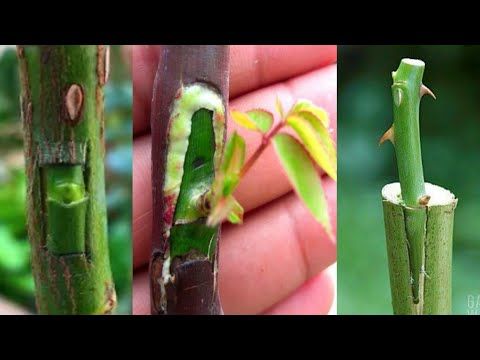4 Ways to Graft Plants

Grafting is a horticultural technique that involves combining two plants, one typically called the rootstock and the other the scion. The process helps promote vigorous growth, increase disease resistance, and enable new cultivars to thrive in different environments. Here are four common methods of grafting plants that you can use in your garden or greenhouse.
1. Whip-and-Tongue Grafting
Whip-and-tongue grafting is suitable for smaller plants with diameters of 1/4 to 1/2 inch. Both the rootstock and scion are cut at matching angles and secured together with a specific kind of overlap, which creates a stable graft.
Steps:
– Make a diagonal cut on both the rootstock and scion.
– Create a second cut into each piece at the same angle.
– Securely join the two pieces by interlocking the second cuts, ensuring cambium layers make contact.
– Wrap the graft with grafting tape or wax to keep it secure and protected.
2. Cleft Grafting
Cleft grafting is ideal for larger plants with stems that are at least an inch in diameter. This method involves cutting the rootstock vertically in the center to create a cleft, while shaping the scion into a wedge.
Steps:
– Cut off top of the rootstock and create a vertical split.
– Shape scions into wedges by making two opposing diagonal cuts.
– Insert scion into cleft of rootstock, aligning cambium layers.
– Seal graft area with grafting compound or wax to prevent moisture loss.
3. Side-Veneer Grafting
Side-veneer grafting is excellent for plants with thin or delicate bark. This method involves cutting an angled flap into the side of the rootstock while keeping it attached at one end, then inserting the prepared scion into the cut and securing it in place.
Steps:
– Create an angled, downward cut in rootstock to form a flap, leaving one edge attached.
– Cut the scion end at a matching angle.
– Slip the scion under the flap made on rootstock.
– Secure with grafting tape, making sure cambium layers touch.
4. T-Budding
T-budding is used primarily for grafting buds from one plant onto the rootstock of another. This method works well for roses and fruit trees. Grafting is performed by cutting a “T” shape into the rootstock and inserting a healthy bud from the desired scion plant.
Steps:
– Carefully remove a healthy bud from scion by making a “shield” shaped cut.
– Create a T-shaped cut on rootstock, ensuring that the top part is slightly wider than the bud piece.
– Insert bud shield into T-cut of rootstock.
– Wrap graft area with budding tape, keeping bud exposed for growth.
Conclusion
Practice makes perfect with grafting techniques, and these four methods offer plenty of opportunities to experiment and improve. By mastering these approaches, you can develop healthier plants with desirable characteristics tailored to your unique gardening needs.






